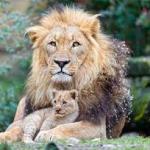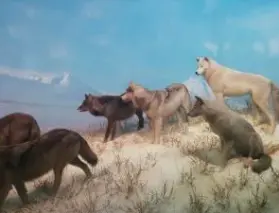Our ecological imagination—our sense of nature as a global, interconnected and sacred whole—has roots in many sources. A relatively unfamiliar one is the work of Alexander von Humboldt (1769-1859), a manic, prolific explorer and naturalist of the German Romantic era. Humboldt’s life and work are the subject of an outstanding biography by Andrea Wulf, The Invention of Nature: Alexander von Humboldt’s New World (2015).
Humboldt’s trademark was the web of connections he drew around whatever he observed. Nature, he insisted, could not be grasped in the slices and pieces into which other scientists chopped it but only as a whole. He looked at each specimen, whether a plant or a human institution, in its relation to global patterns of terrain, weather, and behavior. Such a perspective called for not only information but imagination and emotion as well. His works are as full of poetry as they are of data.
His seminal journey during his thirties took him on a five-year exploration of Latin America. Wherever he traveled, he compared. In the Andes, a moss reminded him of a moss in northern Germany. In Mexico he found trees similar to those in Canada. Measuring temperature and altitude as he climbed stormy volcanoes and crawled across frozen ridges in the Andes, he envisioned the plants of the world in vegetation zones consistent around the planet. He published a large diagram of a mountain with labels for plants at their respective altitudes around the world, from mushrooms at the depths to lichens just below the snow line. No one had ever seen a graphic of ecosystems from a global perspective like this.
Humboldt was the first to note that cutting down a forest set off a cascade of environmental problems, triggering the loss of topsoil, the rapid runoff of rainwater, the flooding of rivers, the drying up of springs, the decline of agriculture. He observed how the farming of single crops for trade, such as indigo in Peru, ruined the soil ‘like a mine,’ and impoverished the people. “He debated nature, ecological issues, imperial power and politics in relation to each other. He criticized unjust land distribution, monocultures, violence against tribal groups and indigenous work conditions” (105).
During his return from South America, Humboldt stopped by the White House to visit another scholar of agricultural economy, Thomas Jefferson. The two saw eye-to-eye on all subjects except one. Humboldt had seen enough slavery in South America to convince him that it was butchery without justification, economic or otherwise. For Humboldt, “What is against nature is unjust, bad, and without validity,” and humans, like plants, all come from one root. “’Nature is the domain of liberty,’ Humboldt said, because nature’s balance was created by diversity” (108). Jefferson agreed but never freed all his slaves (106).
Humboldt noted similarities between the mountains of South America and Africa and argued that those continents had been joined in the past, anticipating the modern theory of plate tectonics.
In his later years in Berlin, he gave a series of free public lectures that packed halls with people from all walks of life. Traffic clogged the city on the lecture days. “He talked about poetry and astronomy but also about geology and landscape painting….He roamed from fossils to the northern lights, and from magnetism to flora, fauna, and the migration of the human race” (194). He spoke from notes layered with clippings, bits of book pages, scribbled post-its, illustrations.
He convened gatherings of scientists from across Europe to exchange information and ideas, establishing in effect the modern scientific conference. Fascinated by the earth’s magnetic field, he successfully urged governments to build a network of magnetic stations across the globe, setting a new level of international scientific cooperation.
In consultation with specialists, Humboldt spent his last years writing Kosmos, a multi-volume survey of what was then known about outer space, the climate and geology of earth, the relation among plants, animals, and humans, the history of science, and the perceptions of nature by artists and poets through the ages.
In 1831, the 22-year-old Charles Darwin boarded the Beagle for his own formative voyage and brought with him Humboldt’s seven-volume narrative of the Latin American expedition. Darwin followed Humboldt in seeing nature as a grand ecological system in constant flux and precarious balance. But while Humboldt looked for the integration of nature, Darwin looked for beginnings. On the Origin of Species appeared a few months after Humboldt’s death in 1859.
In her epilogue, Andrea Wulf writes that Humboldt’s name remains unfamiliar to many because, as the last scientist to study his field so broadly, he has been eclipsed by modern specialists famous for singular discoveries and theories. (Darwin is one example.) Yet when I read today about reverence for nature, anxiety about the climate, and the fused destinies of humans and the environment, I hear Humboldt loud and clear.













